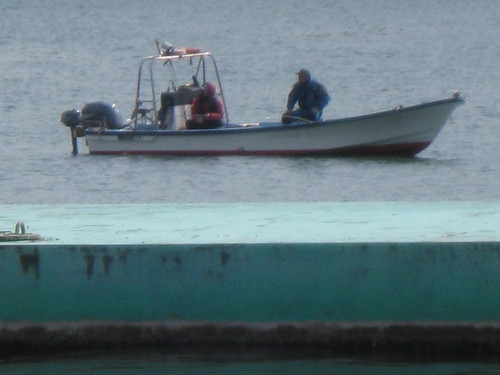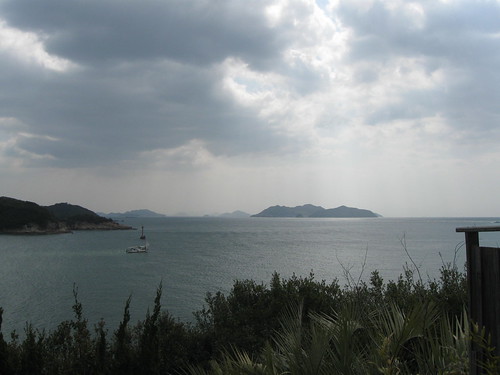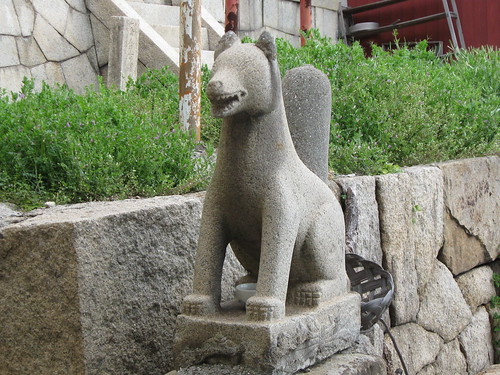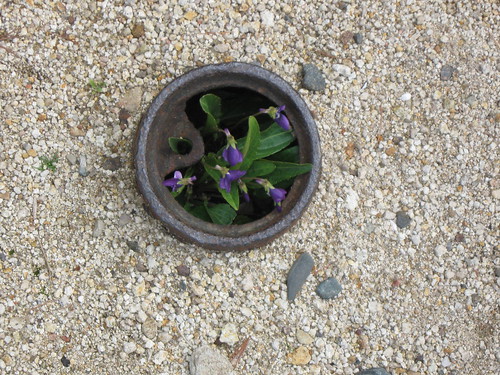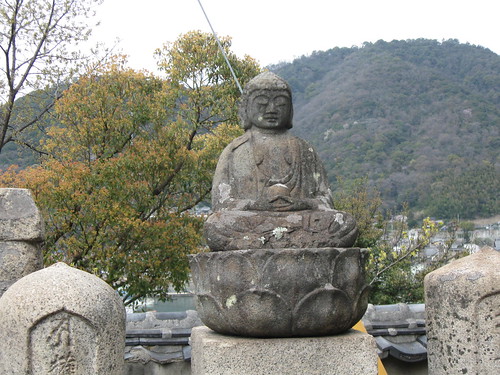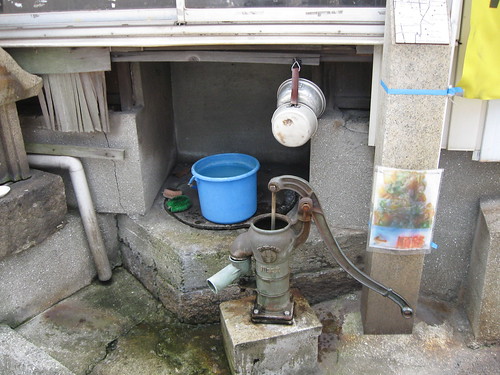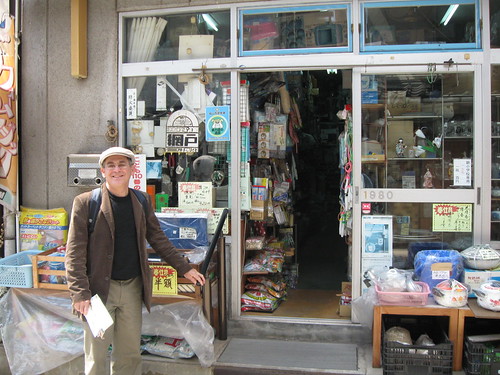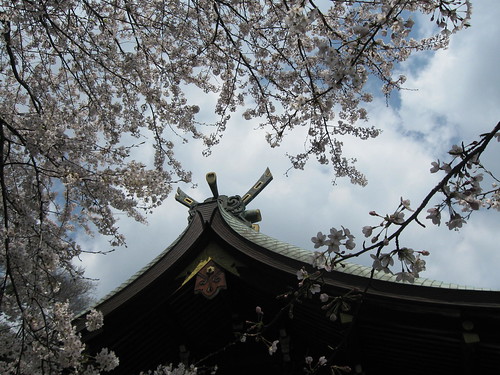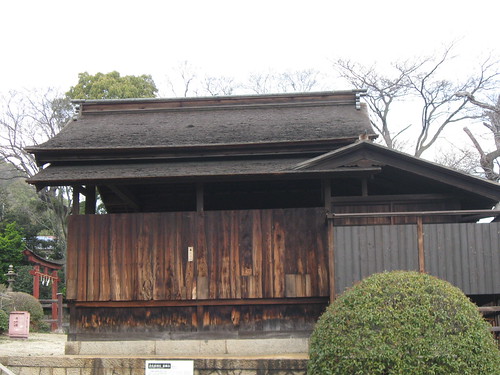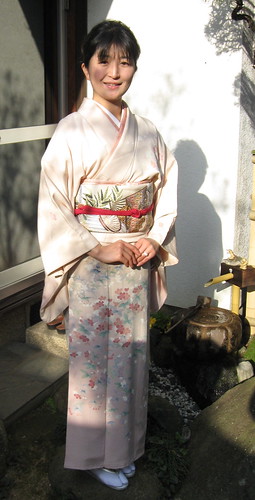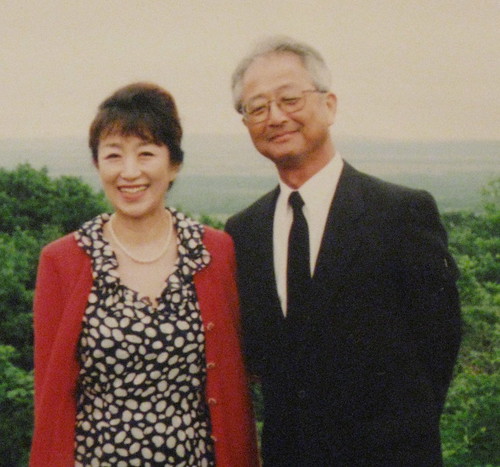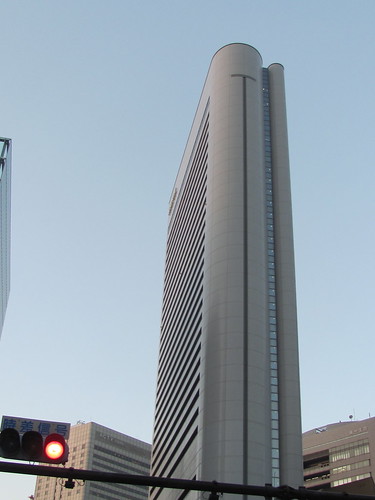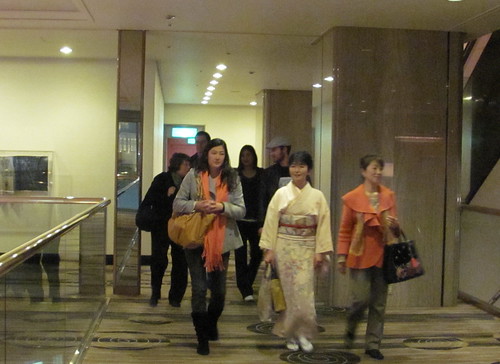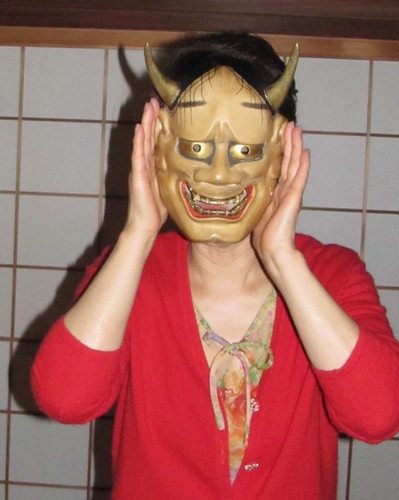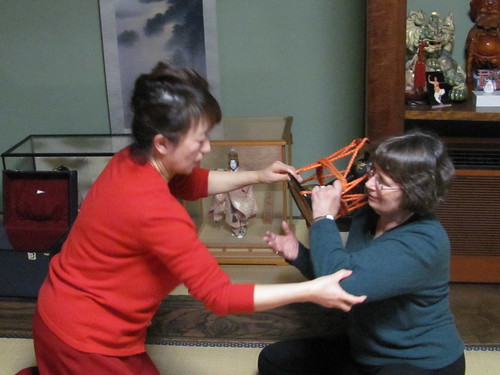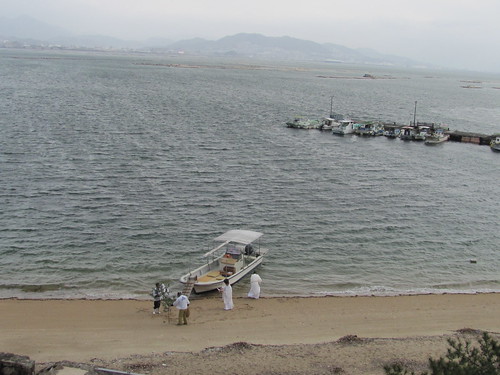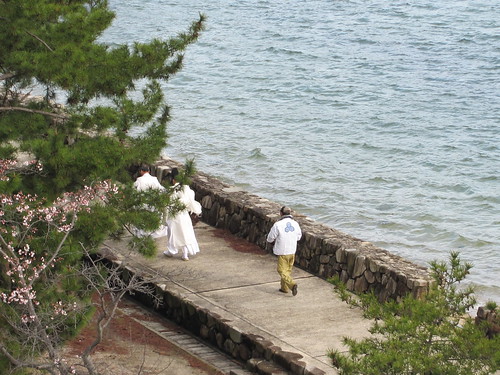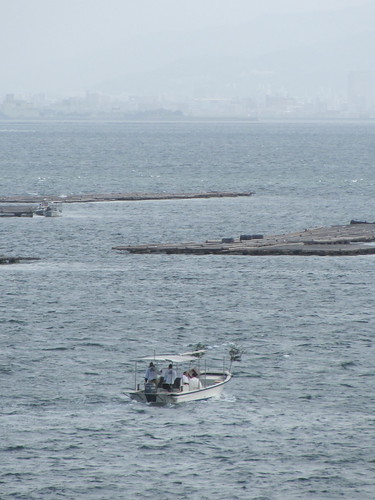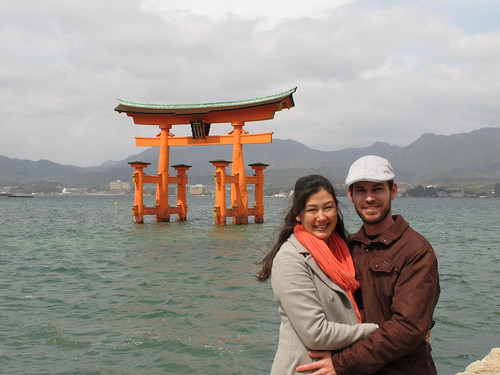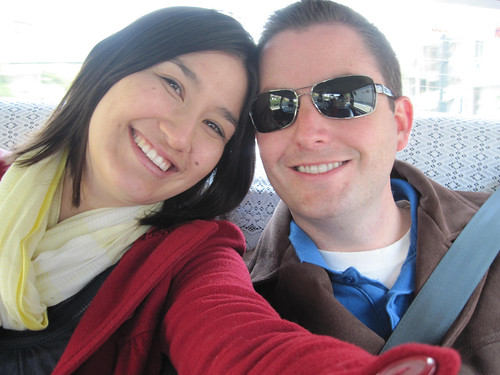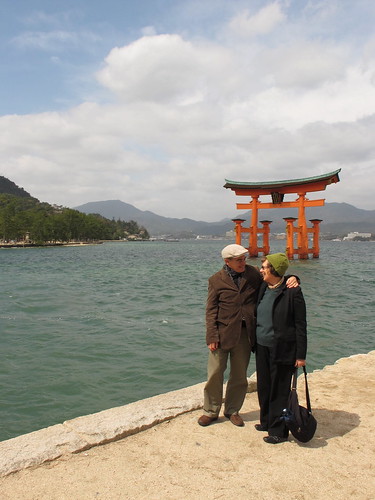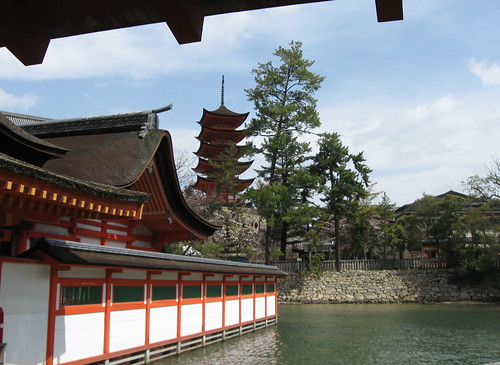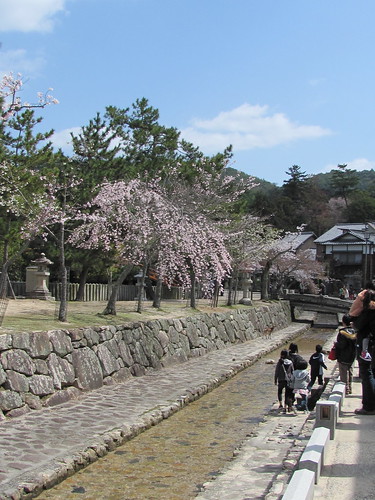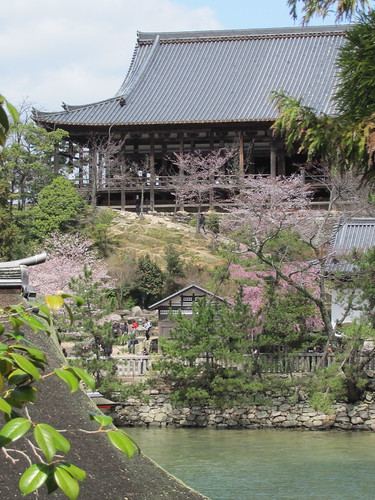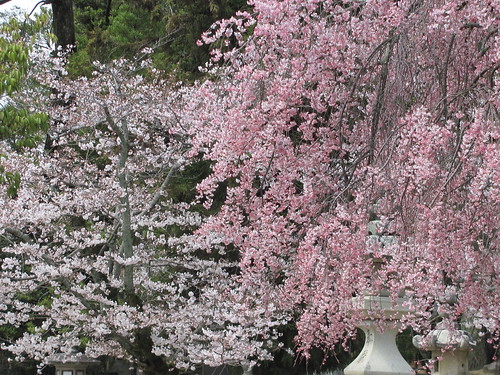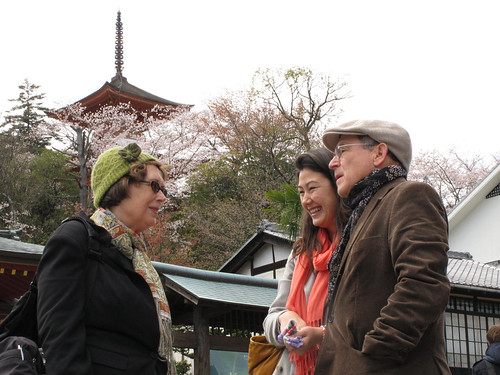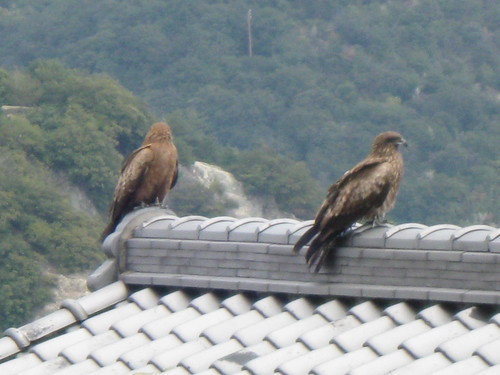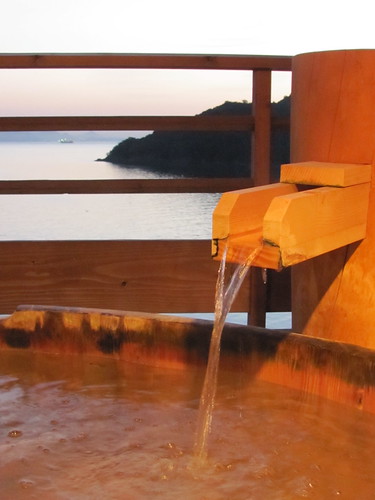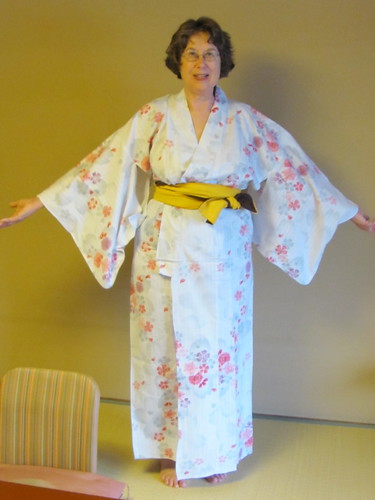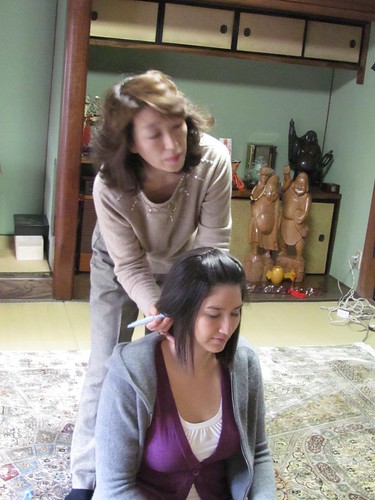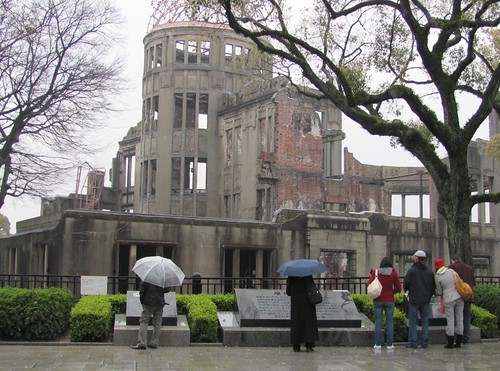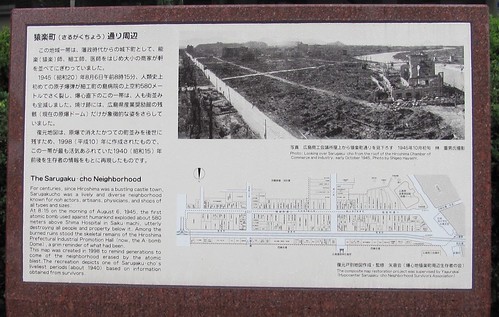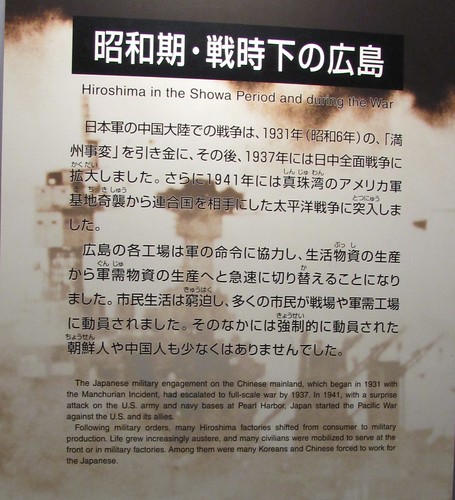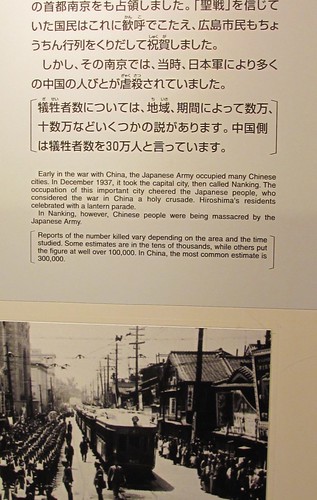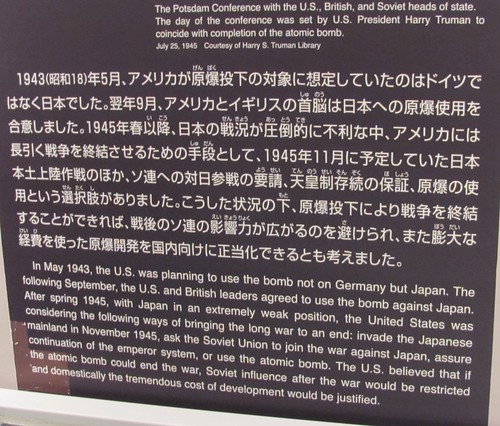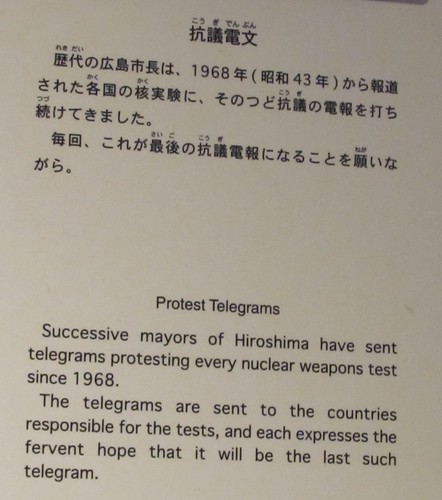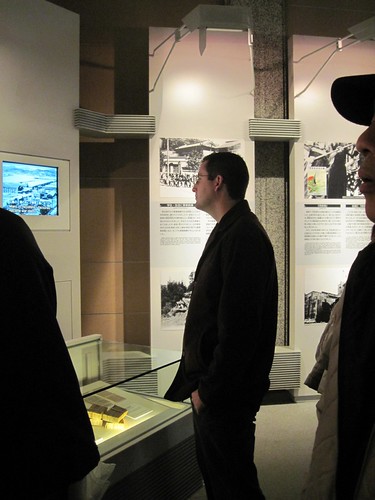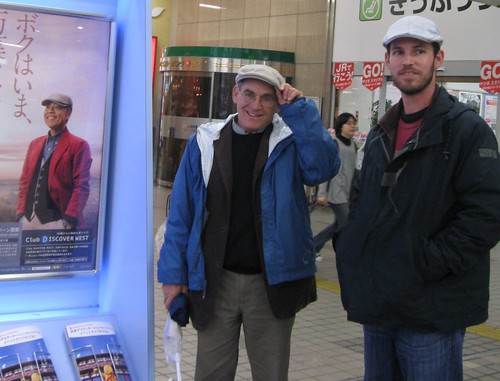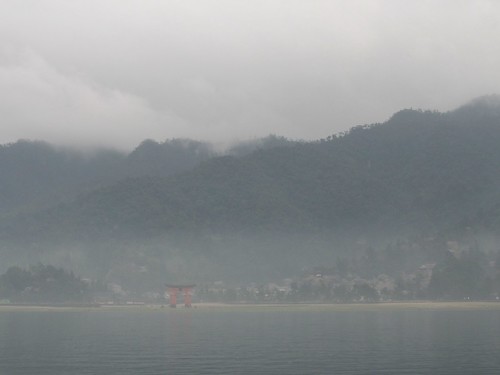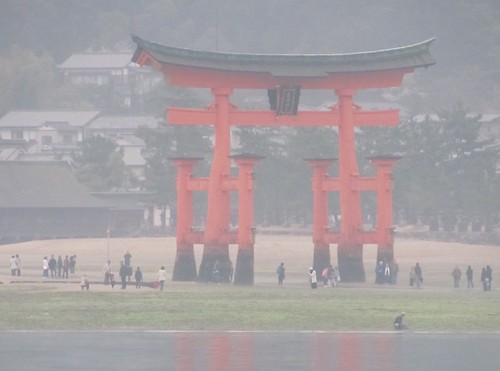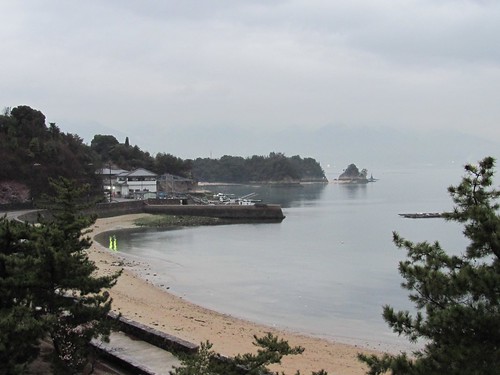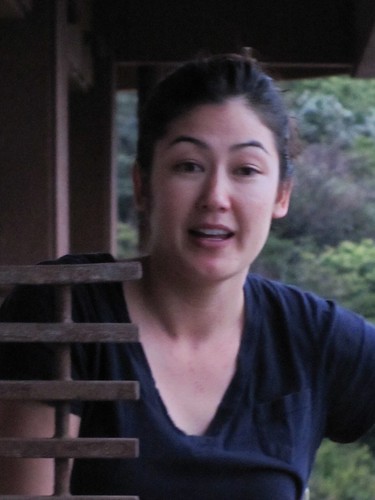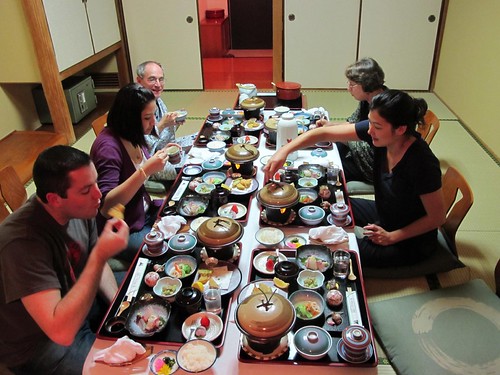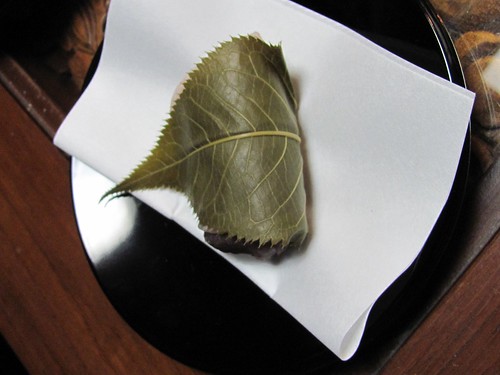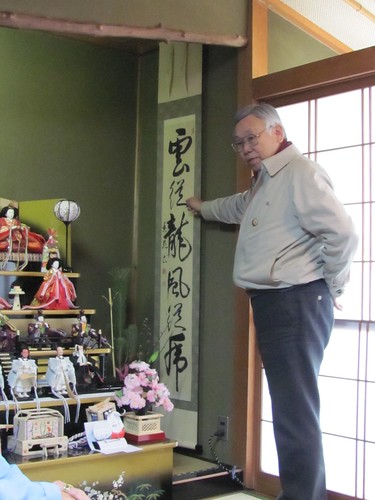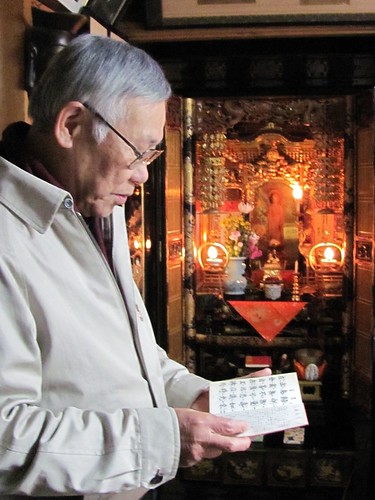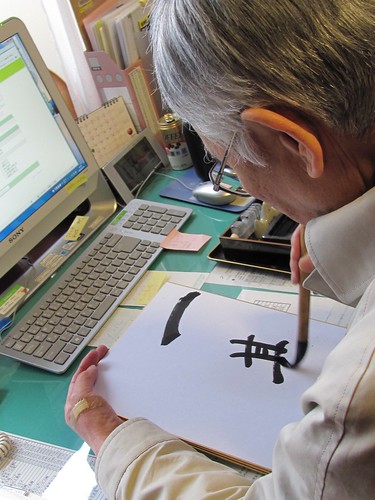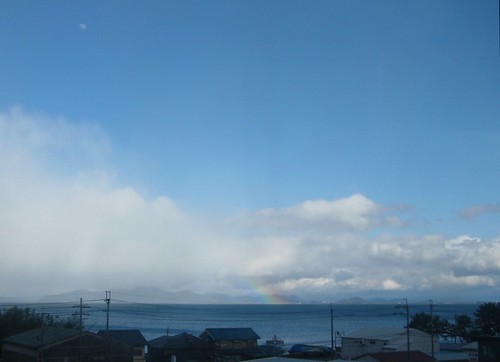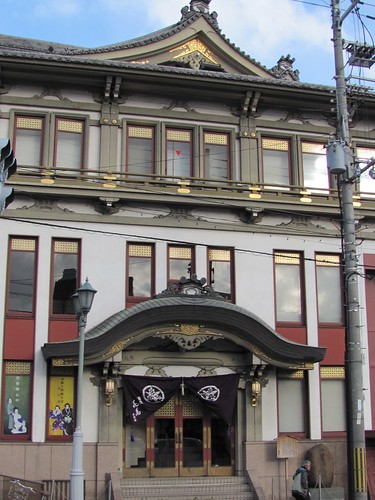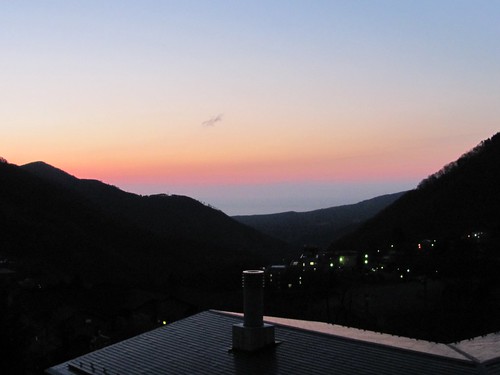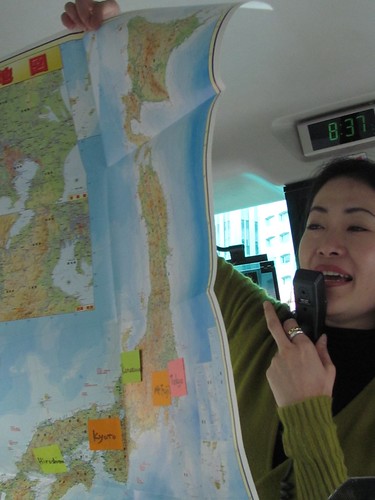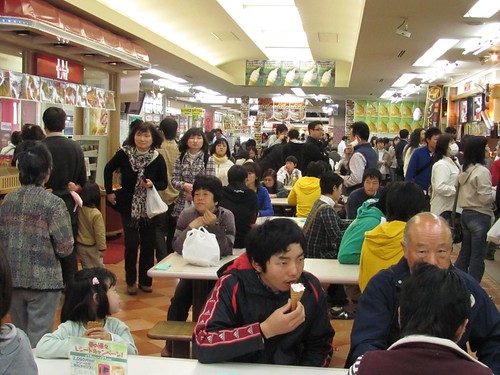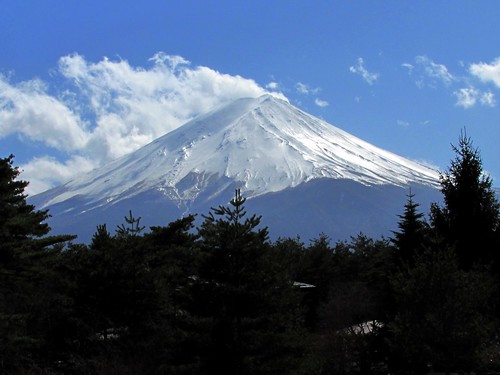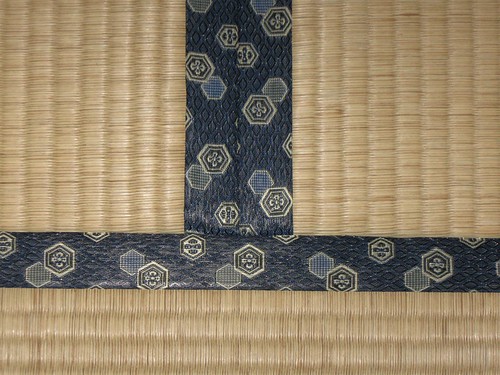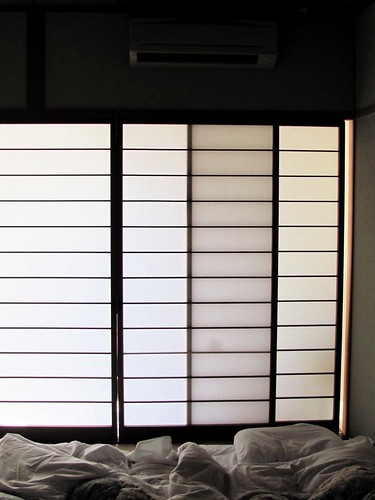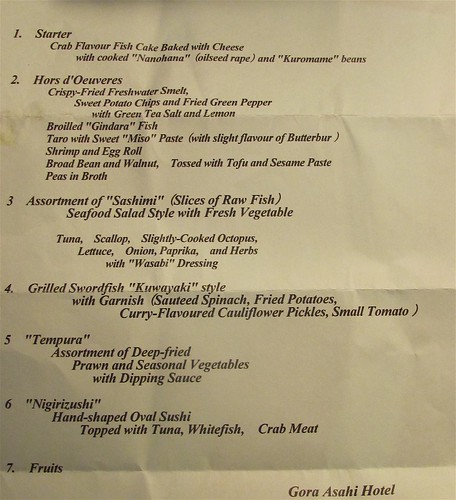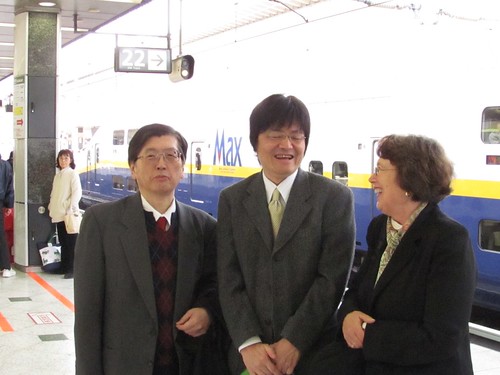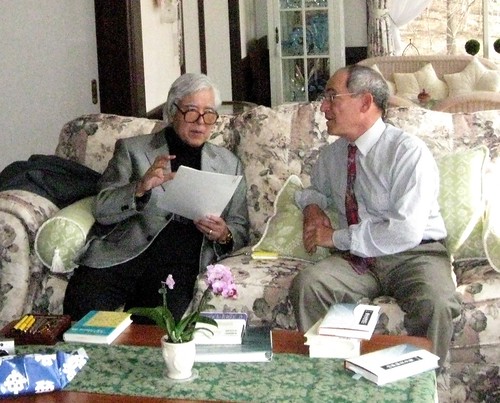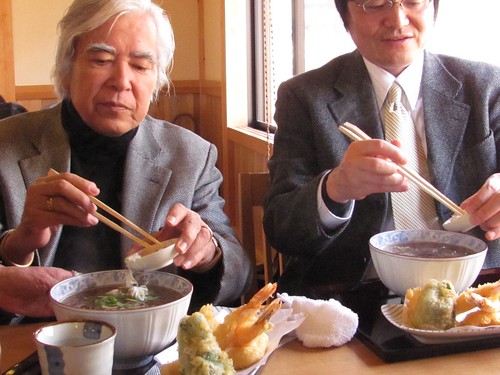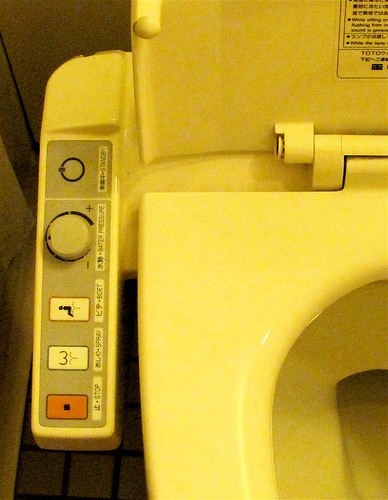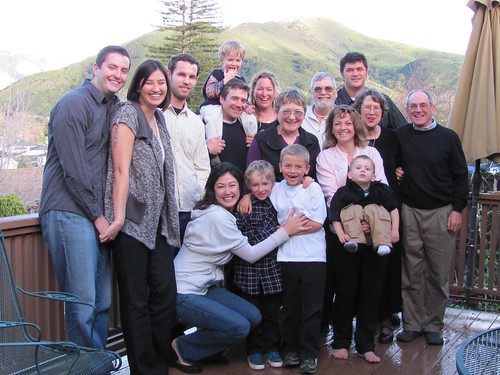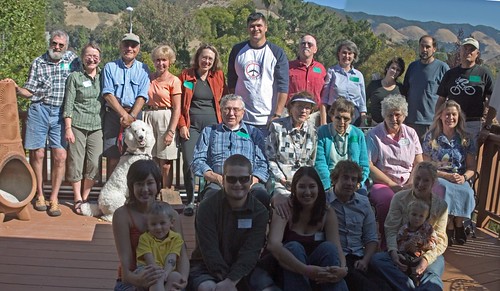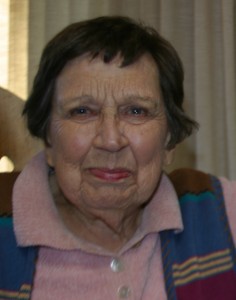Japan Trip 2010–Day 16
Monday, April 26th, 2010Just as Jan and I woke up, You-ki returned home from driving the youngsters to the Shin Osaka station and started preparing us a breakfast of omelette and fresh greens. We shared a little sadness at their departure but also an afterglow in the quiet. The kitchen stereo played Tibetan monk chant. You-ki spoke of the value of a slow pace in early morning and of her regular meditation schedule, particularly important during her Noh training regimen. Conversation alternated comfortably with silence. There was a lot of eye contact. It was Easter. Tomorrow we would leave. She said she would miss us. Though we were sitting around a kitchen table drinking coffee, it felt like the way of tea.
Jan and I were to meet Stephen P. at Tennoji station for a day’s excursion to Nara, Japan’s earliest capital and the site of one of its most celebrated temple and garden preserves. When he called to say he’d be half an hour late, we roamed endless walkways above a busy surface traffic intersection and several underground levels of train and subway tracks.

Even in the midst of this staggering urban infrastructure, the cherry blossoms claimed their space.
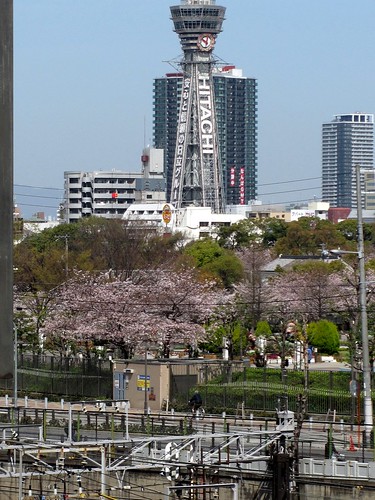
The train was packed this beautiful Sunday at the height of sakura. We were swept by the crowd up the long walk from the Nara station through an ugly downtown to the ancient city precincts. The steps to the Kokuru temple lifted us into another world of ringing bells, clouds of incense, and freely wandering deer.

But soon we felt swamped by the uncharacteristic noise”motorcycles and trucks roaring in traffic on thoroughfares inexplicably routed through the middle of the park, power tools clanking in buildings covered with scaffolding, people shouting while picnicking and playing Frisbee. Stephen mentioned that a friend had recommended going to Isuien gardens to escape the clamor. It was worth the long walk and hefty admission.
Coming through the gateway and around the teahouse a prospect opened like an unfolding screen.

I wanted to just stop and stare at this perfect static panorama of pond and shore, hillock and isle, creek and bridge, tree and shrub, mountain and sky, light and shade–guarded at its center by a discreetly positioned residence of gods. And yet I wanted even more to enter its openings, wander its pathways, mount its rises, descend into its hollows, hear its birds, smell its flowers, feel the flow of its moving waters.

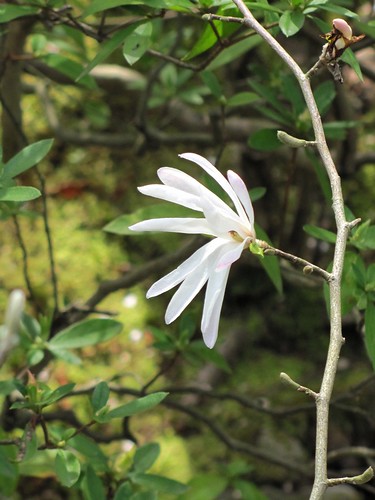

We spent an exalted hour in what turned out to be a surprisingly small area, walled off in back from a busy boulevard that separated the garden from the temple in the view. Driven by hunger we returned to the packed streets and located the restaurant recommended by Ryoko as a place to eat kudzu, a sweet made from the vine which, in the southern U.S., is feared as an invasive pest. Over lunch Stephen told us of his impending plan to enroll in an online Master’s Program leading to a degree that would allow him to teach English in a University in Japan providing a good job for an indefinite stay.
Fortified we headed uphill to the most famous attraction of Nara, Todaiji Temple, the world’s largest wooden building, which houses Daibutsu, the world’s largest statue of Buddha, both originally built in the eighth century, but since then reconstructed several times after earthquake and fire. As we approached Jan reminded me of the story of our old friend and my former student at Columbia, Taigen Dan, whose life was changed by an experience in the presence of the statue that led to his remaining in Japan for years, training as a Zen monk, publishing several translations of Zen classic texts into English, and founding his own thriving Zendo in Chicago.
The crowd was thicker than ever approaching the Temple’s outer gate but neither loud nor unruly.
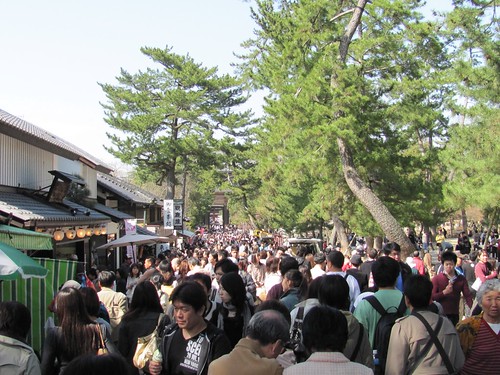
At a cascade nearby children frolicked in a scene reminding me of the creek in San Luis Obispo’s Mission Plaza.
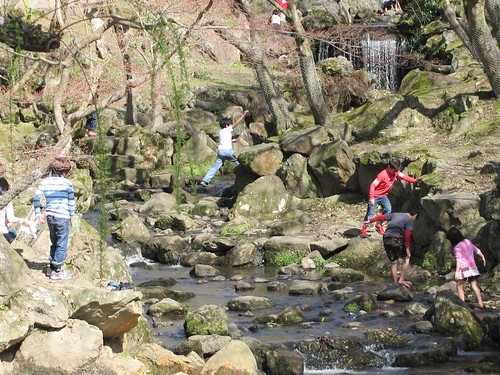
The outer gate introduced the scale of construction of the temple itself.
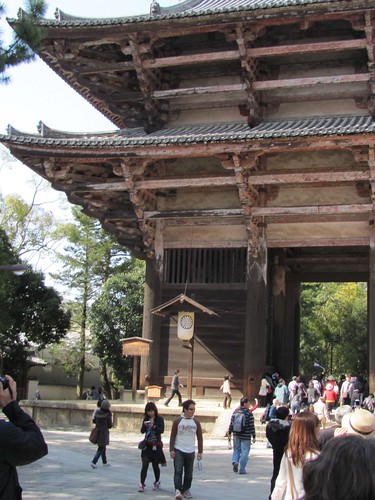
Even at a great distance, the wide-angle lens of my camera could not contain the whole building, whose image required multiple stitches.
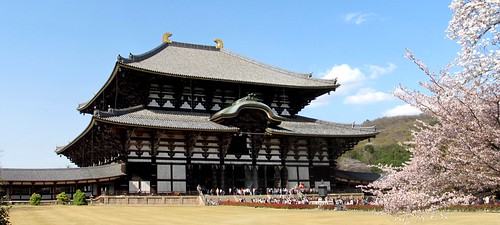
Though size seems to be the temple’s most prominent feature, its immense scale, like that of European cathedrals, is intended to produce the sensation of humility before the magnificence of the sublime in those who enter. Notwithstanding my own scholarly claims about the intimidating psychology of priestly power, I enjoyed giving myself over to the very human grandeur of this edifice.
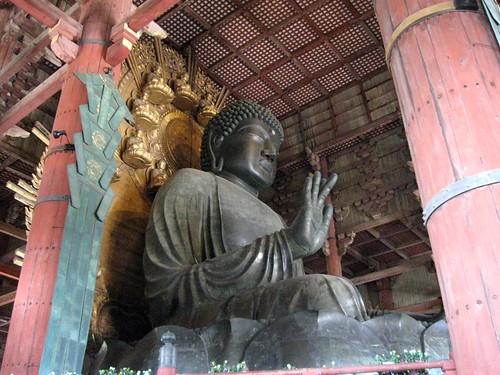
As we headed down the long route toward the train station passing close to Isuien gardens, I looked back at Todaiji and suddenly realized that the discreet centerpiece of the garden’s serene prospect was its roof viewed from a half mile away.
Stephen joined us for dinner with You-ki, who for the last time treated us all for a fine meal at a simple Chinese restaurant not far from her house owned by another friend.
After saying goodbye to Stephen at the train station, we returned to You-ki’s home and she brought out gifts she’d purchased that day for us to take back: green tea, cups and a little pot, which I drink from now as I write. I staged a final picture with the camera on timer.
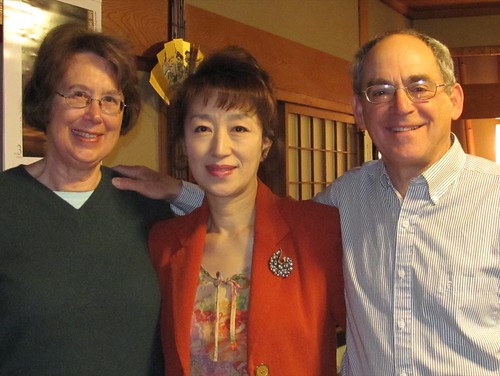
Jan gave her one of the boards that Kano had calligraphed for us:
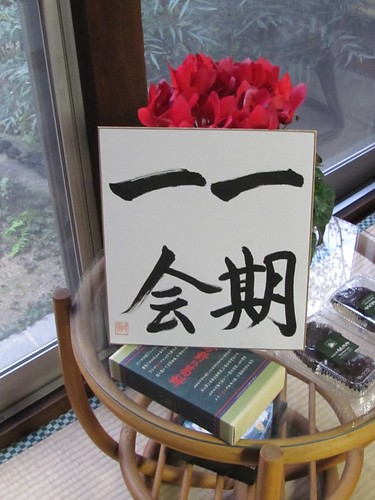
One Life One Encounter.

